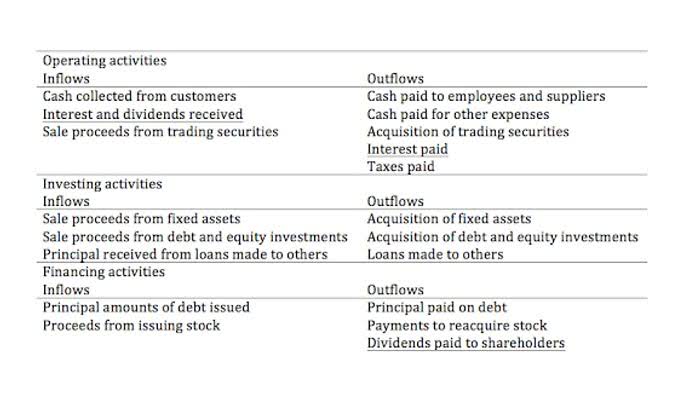
Even though they don’t have a physical form or office space, intangible assets still add value to a company. A right of access to property, a connection to a sister company, or an advantage in a certain market are some examples of intangible assets. It’s no surprise that proper order of assets is a crucial part of any successful financial plan. Asset allocation and sequence of return risk are two of the most important elements of retirement income planning, and the wrong order of assets can lead to financial ruin.
Order of Liquidity of Current Assets: Balance Sheet Example

For instance, assets like cash and short-term investments are highly liquid and easily convertible to cash, providing a strong buffer against unexpected financial requirements. On the other hand, illiquid assets such as real estate or long-term investments may pose challenges when immediate cash flow is essential. Noncurrent assets represent long-term investments, including property, equipment, and intangible assets. A company with a high proportion of current assets relative to current liabilities is generally in a more stable short-term financial position.

Framework for making investment decisions
Order of liquidity refers to the hierarchy of assets based on how easily they can be converted into cash. It determines the speed How to Run Payroll for Restaurants and ease at which an asset can be sold in the market to generate cash. Investments include a diverse range of financial instruments such as stocks, bonds, real estate, and money market accounts with varying levels of liquidity and marketability.
Listing Of Items On The Balance Sheet
By evaluating these ratios, analysts can determine the level of risk exposure a company faces in its day-to-day operations and make informed decisions regarding its financial health. For instance, cash is the most liquid asset as it can be readily used to make payments or cover expenses. On the other hand, marketable securities, while still relatively liquid, may take some time to convert into cash depending on market conditions.

Current Assets Example

One way to measure a firm’s ability to meet its short-term obligations with its liquid assets. Balance sheet liquidity is a measure of a company’s ability to meet its financial obligations with its liquid assets. For reporting the financial health of a business, few reports are as essential as the balance sheet. Since balance sheets are often used to assess how a company operates compared with others or with its own past periods, list assets in order of liquidity accountants prepare balance sheets using generally accepted procedures. Business assets are usually reported by account classifications in order of liquidity, beginning with cash. Arranging assets and liabilities in the order of liquidity provides useful information about a company’s short-term financial health and its ability to meet its short-term obligations.
Small Business Online Banking
- There are many factors to consider, though most cars can generally be sold quickly.
- The company's total current assets increased by 2.09% from $ 128,645 Mn to $ 131,339 Mn in 2017 and 2018, respectively.
- Similarly, liabilities are classified as current liabilities and non-current liabilities.
- Assets are listed in the balance sheet in order of their liquidity, with cash being at the top as it's already liquid.
Join me on this https://www.cezayirkargo.com/what-is-an-outstanding-check-in-accounting/ enlightening journey as we unravel the intricacies of liquidity and its order, empowering you with valuable insights that can elevate your understanding of the financial world. Structures used for business operations like offices, production facilities, and warehouses. Next, let’s look at examples of specific assets within each classification along with their relative liquidity.
- What are liquid assets and liquid investments and why are they important for companies of all sizes?
- Industries like banking have a required amount of cash and cash equivalents that the company must hold to comply with industry regulations.
- The order of liquidity is determined by listing the assets in a specific order.
- As per this, cash is considered the topmost liquid asset, whereas goodwill is considered the most illiquid asset as it cannot generate cash until the business gets sold.
Learn the systematic arrangement of financial resources and obligations on a balance sheet, revealing a company's financial health through its structure. Prepaid expenses are advance payments for goods or services, and their liquidity depends on the timing of expenses being incurred and the benefit derived over time. Improve your company’s liquidity with our Corporate Cards, so you can cover all your bills and payments at any time. Audit standards prohibit arbitrary reordering of assets on balance sheets. But these assets generally take weeks or months to divest, compared to current asset liquidity measured in days. Current assets are those reasonably expected to be realized in cash or consumed within one year.
- Without cash, a company can't pay its bills to vendors or wages to employees.
- Order of liquidity refers to the hierarchy of assets based on how easily they can be converted into cash.
- Assets that can be quickly sold or exchanged for cash at or near their fair market value are highly liquid.
- For example, a company that relies on inventory would have a different order of liquidity than a company that relies on receivables.
- In general, having a high amount of cash or cash equivalents indicates a high level of liquidity.
Capital expenditures (CapEx) reflect investments in long-term assets, impacting cash flow and financial planning. Analysts assess the fixed asset turnover ratio (net sales divided by average PP&E) to evaluate how efficiently a company utilizes its assets. A low ratio may indicate underutilization, while a high ratio suggests effective asset deployment. Businesses must balance CapEx with liquidity needs, ensuring long-term growth without straining short-term financial stability. A liquid asset must have an established market in which enough buyers and sellers exist so that an asset can easily be converted to cash.